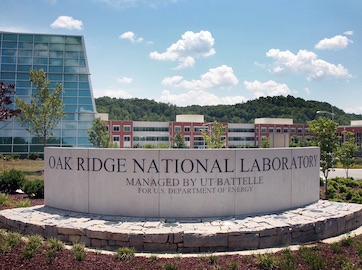Filter Results
Researcher
- Rama K Vasudevan
- Sergei V Kalinin
- Yongtao Liu
- Ali Passian
- Benjamin Manard
- Kevin M Roccapriore
- Maxim A Ziatdinov
- Olga S Ovchinnikova
- Costas Tsouris
- Cyril Thompson
- Kyle Kelley
- Stephen Jesse
- Alexander I Kolesnikov
- Alexander I Wiechert
- Alex Walters
- An-Ping Li
- Andrew Lupini
- Andrzej Nycz
- Anisur Rahman
- Annetta Burger
- Anton Ievlev
- Arpan Biswas
- Brandon A Wilson
- Brian Post
- Carter Christopher
- Chance C Brown
- Charles F Weber
- Christopher Rouleau
- Clay Leach
- Craig A Bridges
- Dave Willis
- Debangshu Mukherjee
- Debraj De
- Derek Dwyer
- Emilio Piesciorovsky
- Gautam Malviya Thakur
- Gerd Duscher
- Hong Wang
- Hoyeon Jeon
- James Gaboardi
- Jeffrey Einkauf
- Jesse McGaha
- Jewook Park
- Joanna Mcfarlane
- John Wenzel
- Jonathan Willocks
- Joseph Chapman
- Kevin Sparks
- Liam Collins
- Liz McBride
- Mahshid Ahmadi-Kalinina
- Mark Loguillo
- Marti Checa Nualart
- Mary Danielson
- Matthew B Stone
- Matt Vick
- Md Inzamam Ul Haque
- N Dianne Ezell
- Neus Domingo Marimon
- Nick Gregorich
- Ondrej Dyck
- Peter Wang
- Radu Custelcean
- Robert Sacci
- Saban Hus
- Sai Mani Prudhvi Valleti
- Som Shrestha
- Sumner Harris
- Syed Islam
- Todd Thomas
- Udaya C Kalluri
- Utkarsh Pratiush
- Vandana Rallabandi
- Victor Fanelli
- Vilmos Kertesz
- Vincent Paquit
- Xiaohan Yang
- Xiuling Nie
- Zhenglai Shen

Often there are major challenges in developing diverse and complex human mobility metrics systematically and quickly.

Dual-GP addresses limitations in traditional GPBO-driven autonomous experimentation by incorporating an additional surrogate observer and allowing human oversight, this technique improves optimization efficiency via data quality assessment and adaptability to unanticipated exp

High-gradient magnetic filtration (HGMF) is a non-destructive separation technique that captures magnetic constituents from a matrix containing other non-magnetic species. One characteristic that actinide metals share across much of the group is that they are magnetic.

The technologies provides for regeneration of anion-exchange resin.
Contact
To learn more about this technology, email partnerships@ornl.gov or call 865-574-1051.

Polarization drift in quantum networks is a major issue. Fiber transforms a transmitted signal’s polarization differently depending on its environment.

The invention introduces a novel, customizable method to create, manipulate, and erase polar topological structures in ferroelectric materials using atomic force microscopy.

Scanning transmission electron microscopes are useful for a variety of applications. Atomic defects in materials are critical for areas such as quantum photonics, magnetic storage, and catalysis.

